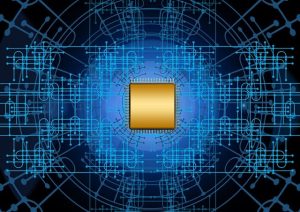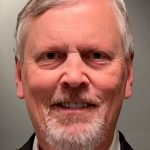Quantum News Briefs August 4: A new type of quantum bit achieved in semiconductor nanostructures; QuSecure expands Board of Directors with Cisco Distinguished Architect Craig Hill; Keyfactor joins the National Cybersecurity Center of Excellence’s (NCCoE’s) Migration to Post-Quantum Cryptography Building Block Consortium;

Quantum News Briefs August 4:
A new type of quantum bit achieved in semiconductor nanostructures
 A German-Chinese research team has successfully created a quantum bit in a semiconductor nanostructure. Using a special energy transition, the researchers created a superposition state in a quantum dot – a tiny area of the semiconductor – in which an electron hole simultaneously possessed two different energy levels. Such superposition states are fundamental for quantum computing. Quantum News Briefs summarizes the findings from August 4 SciTechDaily.
A German-Chinese research team has successfully created a quantum bit in a semiconductor nanostructure. Using a special energy transition, the researchers created a superposition state in a quantum dot – a tiny area of the semiconductor – in which an electron hole simultaneously possessed two different energy levels. Such superposition states are fundamental for quantum computing. Quantum News Briefs summarizes the findings from August 4 SciTechDaily.
Previously, the induction of such a state necessitated a large-scale, free-electron laser capable of emitting light in the terahertz range. Unfortunately, this wavelength was too long to accurately focus the beam on the quantum dot. This team, however, achieved the excitation with two carefully calibrated, short-wavelength optical laser pulses.
The team headed by Feng Liu from Zhejiang University in Hangzhou, together with a group led by Dr. Arne Ludwig from Ruhr University Bochum and other researchers from China and the UK, report their findings in the journal Nature Nanotechnology, published online on July 24, 2023.
The researchers used finely tuned laser pulses to create a superposition between the hole ground state and the higher energy state. The hole thus existed in both states simultaneously. Such superpositions are the basis for quantum bits, which, unlike conventional bits, exist not only in the states “0” and “1,” but also in superpositions of both.
Hans-Georg Babin produced the high-purity semiconductor samples for the experiment at Ruhr University Bochum under the supervision of Dr. Arne Ludwig at the Chair for Applied Solid State Physics headed by Professor Andreas Wieck. In the process, the researchers increased the ensemble homogeneity of the quantum dots and ensured the high purity of the structures produced. These measures facilitated the performance of the experiments by the Chinese partners working with Jun-Yong Yan and Feng Liu. Click here to read SciTechDaily article in-entirety.
QuSecure expands its Board of Directors with Cisco Distinguished Architect Craig Hill
 QuSecure™, Inc., a leader in post-quantum cryptography (PQC), today announced it has named Cisco Distinguished Architect Craig Hill as an independent director to its Board of Directors.
QuSecure™, Inc., a leader in post-quantum cryptography (PQC), today announced it has named Cisco Distinguished Architect Craig Hill as an independent director to its Board of Directors.
The appointment comes at a critical point for cryptography. Although today’s best classical computers would take an estimated 300 trillion years to break an RSA-2048 cipher, advances in error correction in the past year pave a pathway to enabling a large quantum computer to complete the same task in hours. These developments put at risk every sensitive data store and communication — from cryptocurrency to national defense.
“With a looming crisis, you must go to the undisputed leader,” saysQuSecure board member. “Cisco powers the Internet and you can’t find anyone who is more deeply involved in wide-scale network security than Craig Hill. Everyone at QuSecure, without exception, knows how fortunate we are that he’s with us.”
“We’re thrilled to welcome Craig to our team,” adds Dave Krauthamer, QuSecure’s CEO. “Craig’s vision and passion for technology, as well as his proven track record in scaling highly complex global networks, is demonstrated throughout his successful career. Even if you haven’t heard Craig Hill’s name, you benefit every day from Craig’s influence on the modern internet. We look forward to leveraging his vast industry experience as we enter this critical growth stage and prepare for the global transition to crypto-agile networks. Our mission is to create a safer future, and Craig will be a key contributor to that effort.” Click here to read the announcement in-entirety.
Keyfactor joins the National Cybersecurity Center of Excellence’s (NCCoE’s) Migration to Post-Quantum Cryptography Building Block Consortium
 Keyfactor announced it has joined the National Cybersecurity Center of Excellence’s (NCCoE’s) Migration to Post-Quantum Cryptography Building Block Consortium. Keyfactor joins companies, including Microsoft, IBM, and AWS, to bring about awareness to the issues involved in migrating to post-quantum algorithms and to develop practices to ease migration from current public-key cryptographic algorithms to replacement algorithms.
Keyfactor announced it has joined the National Cybersecurity Center of Excellence’s (NCCoE’s) Migration to Post-Quantum Cryptography Building Block Consortium. Keyfactor joins companies, including Microsoft, IBM, and AWS, to bring about awareness to the issues involved in migrating to post-quantum algorithms and to develop practices to ease migration from current public-key cryptographic algorithms to replacement algorithms.
“Preparation for quantum-resistant security is not something that can be left for later. When quantum computing becomes available, vulnerabilities will spring up quickly. There are already hostile hackers and groups executing a “steal now, decrypt later” approach, utilizing exfiltration attacks to gather data today that could one day be valuable,” said Ted Shorter, Chief Technology Officer, Keyfactor. “It’s important for organizations to understand this very real – and inevitable – risk. It’s our hope that as a member of the NCCoE’s Migration to Post-Quantum Cryptography Building Block Consortium, we can bring quantum computing planning to the forefront of every security leader’s agenda.”
The initial scope of the NCCoE Migration to Post Quantum Cryptography project is to engage the industry to demonstrate the use of automated discovery tools to identify instances of quantum-vulnerable public-key algorithms that are widely deployed and to manage associated risks. Other goals include the development and improvement of a migration strategy, interoperability and performance of implementations, and outreach to standard developing organizations and industry sectors.
Click here to read announcement in-entirety.
Why India risks a quantum tech brain drain
 India’s National Quantum Mission (NQM), approved by the national cabinet in April, is a government initiative that has the potential to catapult India to a global leader leading in quantum research and technologies, if leveraged correctly. Urbasi Sinha, Professor at the Raman Research Institute (RRI), Bangalore, India authored a July 30 article in TEMPO.CO explaining a great risk to the long-term success. Quantum News Briefs summarizes.
India’s National Quantum Mission (NQM), approved by the national cabinet in April, is a government initiative that has the potential to catapult India to a global leader leading in quantum research and technologies, if leveraged correctly. Urbasi Sinha, Professor at the Raman Research Institute (RRI), Bangalore, India authored a July 30 article in TEMPO.CO explaining a great risk to the long-term success. Quantum News Briefs summarizes.
Sinha explains the main areas of focus of India’s NQM research are quantum computing, secure quantum communications, quantum sensing and metrology and quantum materials.
The challenge for India, she cautions, is how India ensures it gets the best out of the mission.
India’s Department of Science and Technology had set up a pilot programme on Quantum Enabled Science and Technologies — a precursor to the National Quantum Mission.
As a result, India has a large number of young and energetic researchers, working at places such as RRI Bangalore, TIFR and IIT Delhi who have put an infrastructure in place for the next generation quantum experiments with capabilities in different quantum technology platforms. These include quantum security through free space, fibres as well-integrated photonics, quantum sensing and metrology.
Clear career progression would help India’s quantum workforce. The risk of brain drain, where local talent moves overseas for better opportunities, could be a real possibility if different industries which can benefit from the technology fail to recognise its transformative capabilities and how it can help create jobs and opportunities. The career path of students and post-doctoral researchers remains unclear as there are not enough positions in the academic sector. Another problem is industry and academia are competing with each other for quantum research funding which is why equal emphasis on quantum technology development in the industrial sector could help.
While India does have some quantum start-ups, more lab-to-market innovations which would make the technology practically useful could give the field momentum. Currently, the big industrial firms in India are not yet committed to quantum technology.
Another major deterrent is the lack of coordination. Multiple efforts to develop and research the technology, across government and start-ups, does not seem to have coherence and still lacks maturity.
Sinha concludes, “Continuing to build a skilled workforce and a clear career progression plan for those involved in research and development of quantum technologies can help secure India’s future in this space.” Click here to read her article in-entirety.
Sandra K. Helsel, Ph.D. has been researching and reporting on frontier technologies since 1990. She has her Ph.D. from the University of Arizona.



















